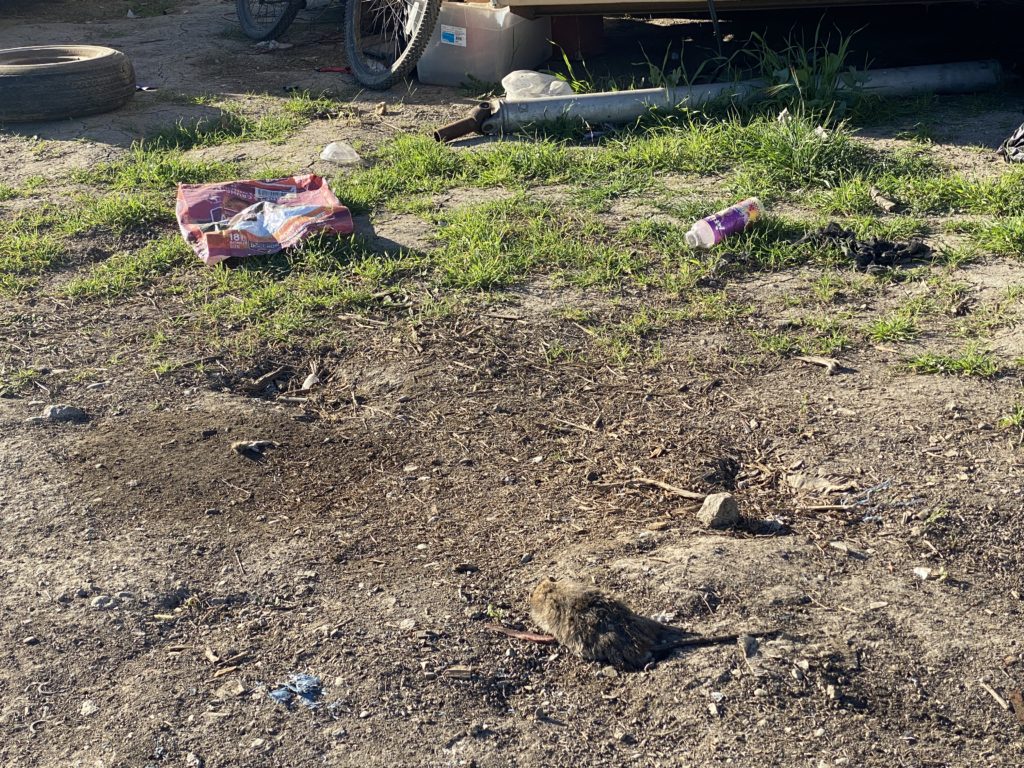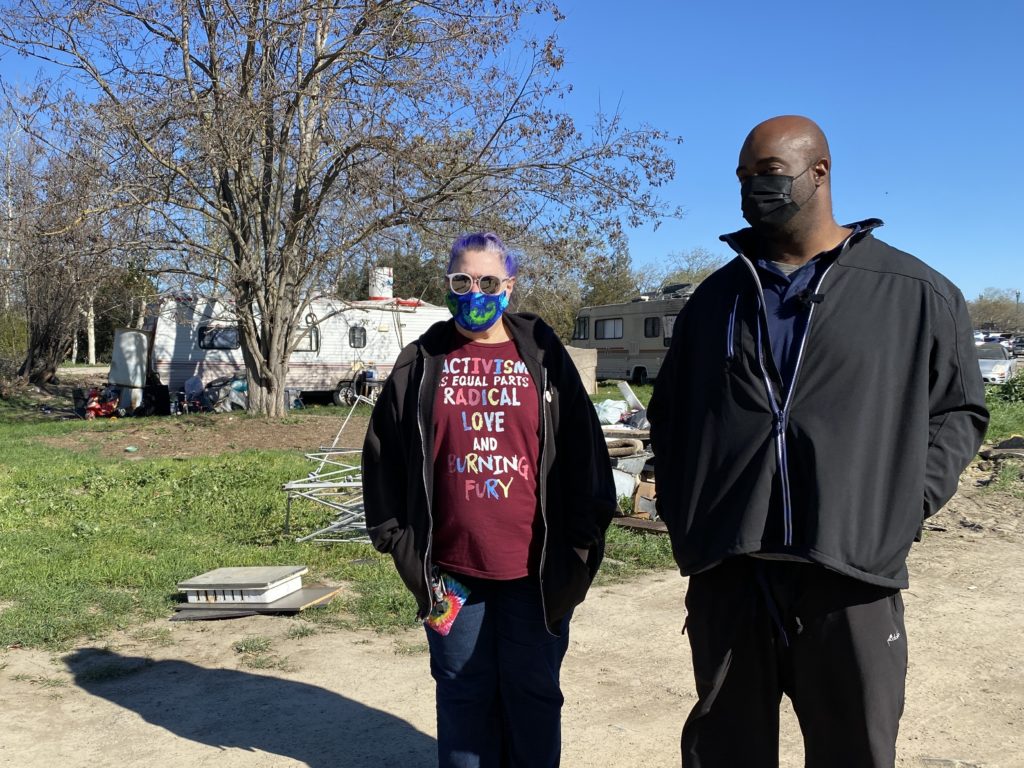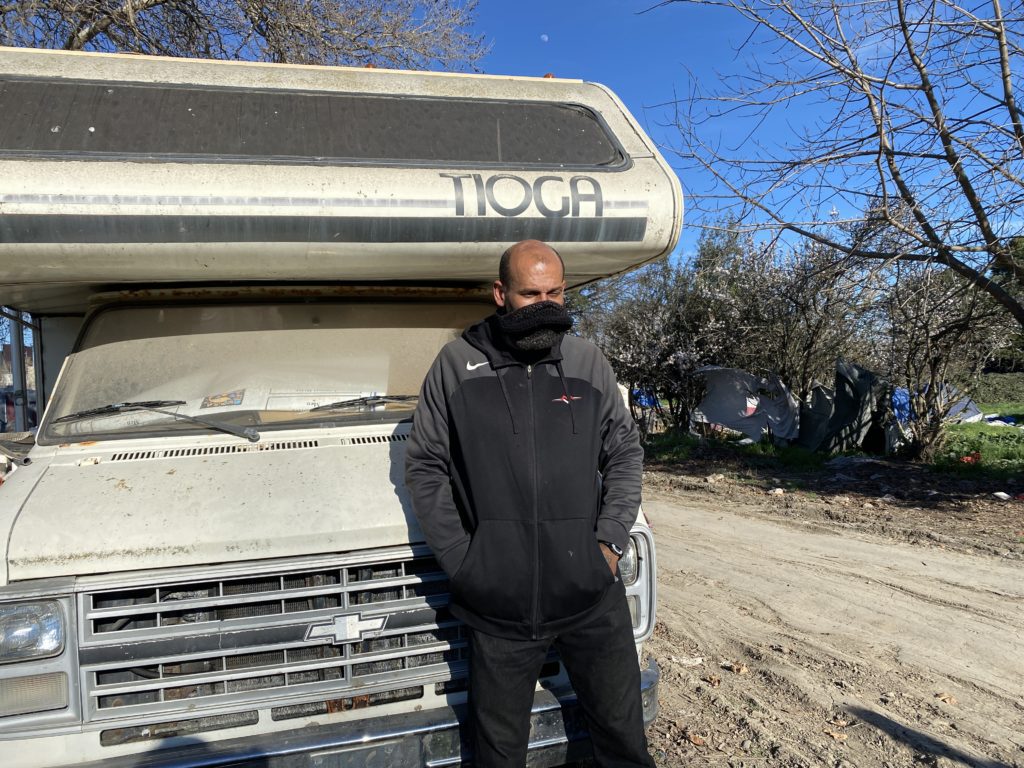At the epicenter of a humanitarian crisis in San Jose where hundreds of people sleep outdoors, another crisis is festering: rats.
“They’re everywhere,” Luke Eblieg, an unhoused person living at the sprawling encampment near Columbus Park, told San José Spotlight. “And they are nothing like I have ever seen.”
Brown rats are chewing through electrical wires in vehicles, squeezing their way into ice chests and sleeping bags and leaving potentially dangerous urine and feces. People living at the camp near Asbury and Spring streets said some are getting sick from the rampant infestation, while others have had to put their dogs down after coming into contact with water or food contaminated by rodents.


Living conditions at one of the largest encampments in the Bay Area have gone from bad to worse after San Jose removed multiple dumpsters from the camp late last year, unhoused people said. Officials said the city removed the dumpsters because of rampant illegal dumping from people outside the camp, but it still provides weekly trash pickup. Those at the camp said San Jose only hauls away trash in city-sponsored bags that they haven’t gotten in weeks.
With trash piling up along campsites, the sprawling camp near Columbus Park has quickly become grounds for rodents to breed—and thrive.


Some people put out rat poison and traps around their camps with little luck, unhoused resident Kelly Goodman said. Others have started shooting the rats with pellet guns.
“I keep my dogs inside all the time now,” said Rudy Ortega, a homeless resident living in an RV. “People were picking up their trash until (the city) took the dumpsters out. The city created this issue.”
Concerned with the infestation, the Santa Clara County Vector Control District is testing fleas found on trapped rats. County officials confirmed the camp hasn’t had any cases of leptospirosis, an infectious disease that can spread through rat urine and turn deadly without treatment.
“We will continue to work with the city of San Jose and other agencies for a safer community,” county officials told San José Spotlight.
Elected officials said San Jose is racing to find long term solutions—or at least another place to go—for people at the site in the upcoming months. San Jose is working on several initiatives including safe parking sites, quick-build apartments and vehicle repair services, officials said.
For San Jose Councilmember Dev Davis, who now represents the area where the encampment is located, safe parking sites are her office’s priority. The new political boundaries, adopted through the redistricting process, shifts the encampment into Davis’ district.
“What we need to be doing is finding people alternate places to stay,” Davis told San José Spotlight, adding the city needs a host of solutions to fit the diverse needs in the homeless population. “It’s not tenable out there for multiple reasons.”


An ongoing crisis
The rat infestation at the camp near Columbus Park is another plight in the humanitarian crisis unfolding in the heart of wealthy Silicon Valley. Residing in one of the richest regions in the world, Santa Clara County and San Jose officials continue to grapple with their failure to address the growing homeless crisis that has only gotten worse during the COVID-19 pandemic.
At the encampment on Spring Street, where nonprofits, faith-based organizations and advocates stop by weekly to provide services, food and essentials, a few hundred people are still in limbo with nowhere to go. Hanging over their heads is the fast approaching deadline for San Jose to clear them off the land.
The Federal Aviation Administration is demanding San Jose remove homeless residents living near Columbus Park by June 30, or it could withhold millions in federal funding. The land sits under the flight path of Mineta San Jose International Airport and is unsafe due to its heavy noise pollution and proximity to runways.
“People out here sometimes forget that we all gotta go soon,” said Buchi Aralu, an unhoused person living at the encampment. “The condition out here just weighs people down. Most of us just try to get through the day.”
Many unhoused people and advocates said housing—as well as services to help them stay sober, address mental illness or find a job—is key to get people off the streets.
County and city officials have raced to build more housing of all types— supportive housing, prefabricated models, temporary units and motel rooms—to fill the gaps in the area’s housing inventory. Last week, city officials broke ground on a 76-unit complex down the street from the Columbus Park encampment in a San Jose police parking lot expected to open later this year.
San Jose is also expanding its outreach program SOAR—Services, Outreach, Assistance and Resources—to connect people at the encampment with services and case management, city spokesperson Daniel Lazo said. The program has a budget of $6.7 million for hotel vouchers and rapid rehousing services. It also has $300,000 to hire housing specialist and provide one-time financial assistance to get up to 120 people into housing.


Solutions in the works
San Jose is still exploring housing solutions for those at the camp, but there could soon be some immediate relief.
The city is also partnering with HomeFirst, a nonprofit that provides management for shelter and tiny home sites, to bring mechanics out to the encampment to fix residents’ vehicles. Larry Townsend Jr., who owns a downtown auto shop, signed a contract with HomeFirst last week after being recommended by an unhoused advocate.
“HomeFirst hasn’t told me much about the work,” Townsend told San José Spotlight, looking out to a field of broken vehicles. “But we’re ready to get the ball rolling.”


Aralu, who owns an RV with expired tags, hopes the city and HomeFirst will help people pay for their registration too.
“I want to leave here, but I don’t want the RV to get towed because of expired tags,” he said. “I don’t know who could help me with that, but that would be helpful.”
Contact Tran Nguyen at [email protected] or follow @nguyenntrann on Twitter.



Leave a Reply
You must be logged in to post a comment.